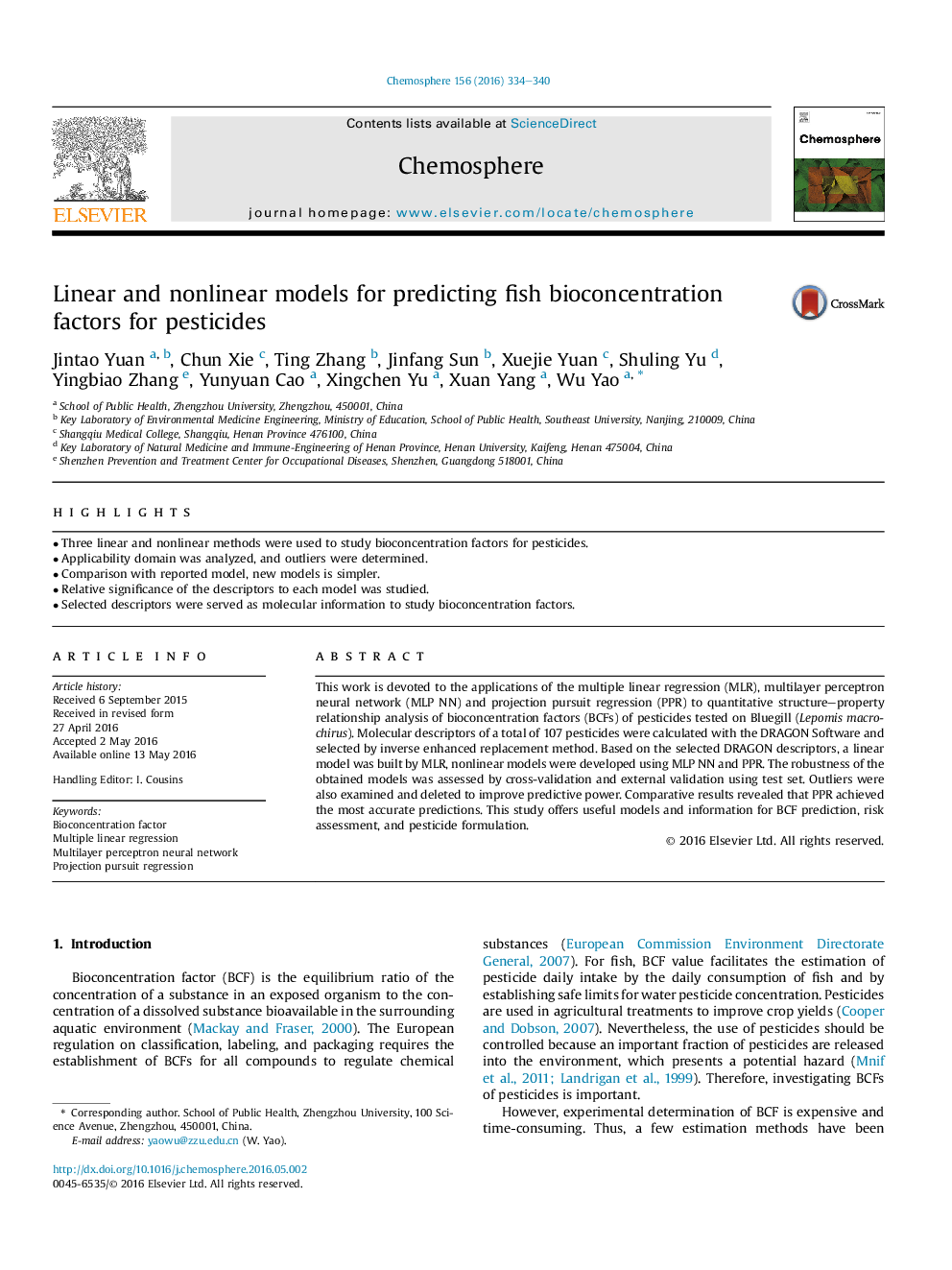| Article ID | Journal | Published Year | Pages | File Type |
|---|---|---|---|---|
| 4407711 | Chemosphere | 2016 | 7 Pages |
•Three linear and nonlinear methods were used to study bioconcentration factors for pesticides.•Applicability domain was analyzed, and outliers were determined.•Comparison with reported model, new models is simpler.•Relative significance of the descriptors to each model was studied.•Selected descriptors were served as molecular information to study bioconcentration factors.
This work is devoted to the applications of the multiple linear regression (MLR), multilayer perceptron neural network (MLP NN) and projection pursuit regression (PPR) to quantitative structure–property relationship analysis of bioconcentration factors (BCFs) of pesticides tested on Bluegill (Lepomis macrochirus). Molecular descriptors of a total of 107 pesticides were calculated with the DRAGON Software and selected by inverse enhanced replacement method. Based on the selected DRAGON descriptors, a linear model was built by MLR, nonlinear models were developed using MLP NN and PPR. The robustness of the obtained models was assessed by cross-validation and external validation using test set. Outliers were also examined and deleted to improve predictive power. Comparative results revealed that PPR achieved the most accurate predictions. This study offers useful models and information for BCF prediction, risk assessment, and pesticide formulation.
